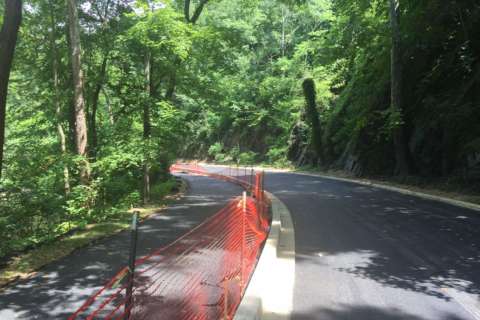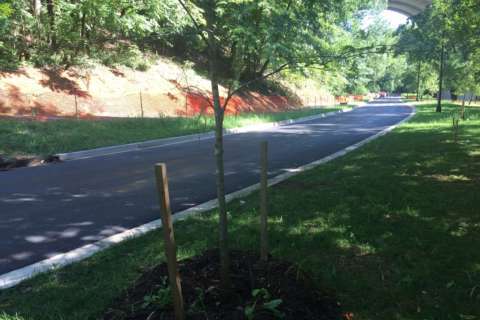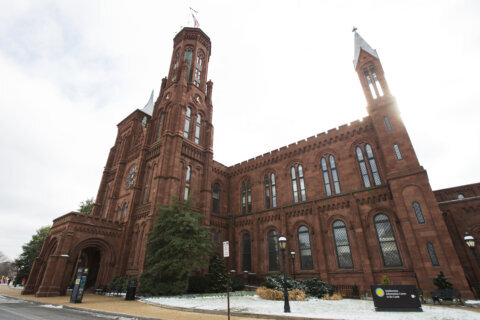WASHINGTON — On a soggy Saturday, people jogging or biking on the paved trail alongside Beach Drive in D.C. may or may not have noticed a small stretch of the trail handled rainy weather differently.
For a few hundred feet, just south of Piney Branch Parkway, the National Park Service has installed an experimental type of pavement. It doesn’t look any different from the rest of the trail, and for those jogging on the path, it doesn’t feel different either. But the porous, permeable pavement the Park Service is testing may make future biking and hiking trails more accessible after a heavy rain, while also having a positive impact on the environment.
Jenny Anzelmo-Sarles, a spokeswoman for the National Park Service, demonstrated to WTOP just how this works back in July. In a video, she can be seen holding a cup of water in her hands as she explains how “the water will drain right through” the pavement instead of pooling across the surface in puddles for feet or bike tires to splash through.
“Just give it a second here, and it’s like magic,” Anzelmo-Sarles says in the video as she begins to pour the water into the pavement. “It just goes straight through the pavement.”
The difference will be noticeable in the decrease in puddles on this part of the trail, she said.
When the water seeps into the pavement, it brings with it sediment and other runoff, allowing the pavement to work as an extra filter.
“We are within the Chesapeake Bay drainage and watershed,” said Danny Schaible, a project specialist with the National Park Service. “This will help clean and filter the water before it enters Rock Creek.”
A couple of times a year, the Park Service will have to perform an extra bit of maintenance on this part of the trail: They will need to run a vacuum over it to suck up the dust and sediment to keep the pavement from getting clogged.








